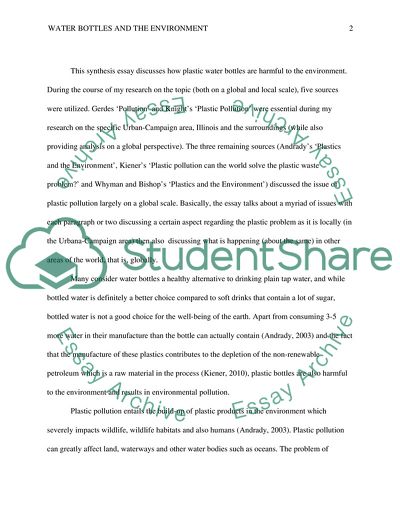Water Bottles and the Environment Literature review Example | Topics and Well Written Essays - 1500 words. https://studentshare.org/environmental-studies/1826445-synthesis-essay-on-water-bottle
Water Bottles and the Environment Literature Review Example | Topics and Well Written Essays - 1500 Words. https://studentshare.org/environmental-studies/1826445-synthesis-essay-on-water-bottle.


